Although quite close geographically, Indonesia and Malaysia offer wonderfully distinct experiences owing to their diverse culture, cuisine, people and traditions. Both locations make a great holiday destination as they combine the lure of big city life and rustic rural charm in the best ways possible.
Feeling inspired to start the adventure? Take a look at the most popular tours travelling to Malaysia and tours travelling to Indonesia.
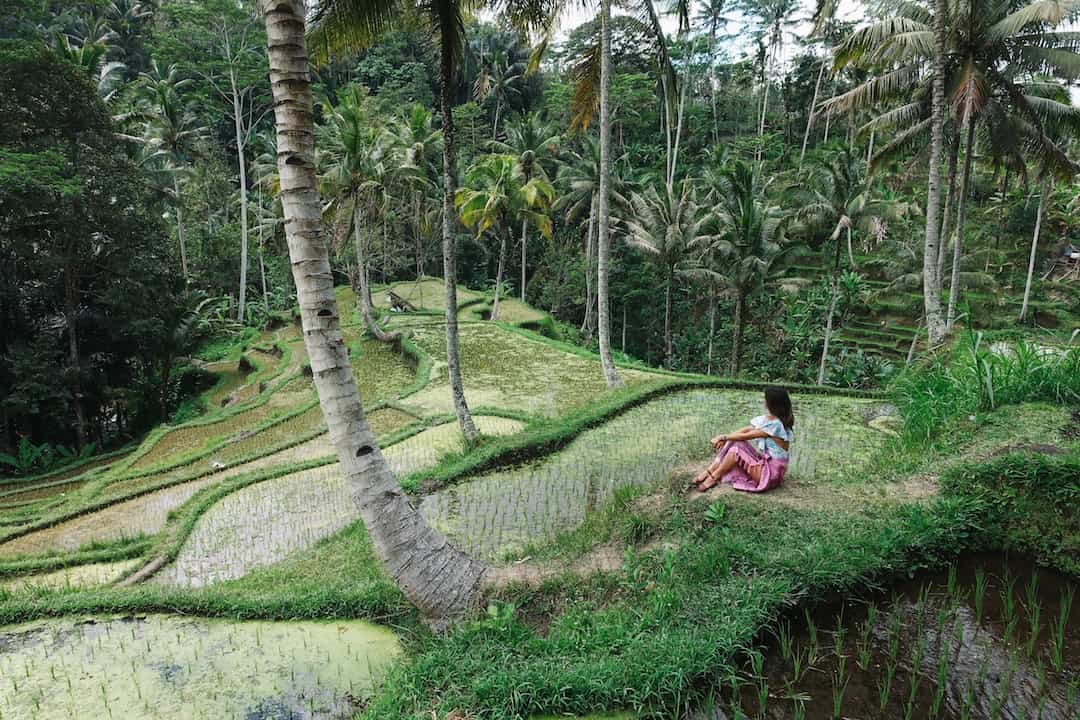
Destinations and Things to do
Travel Destinations in Malaysia
From iconic and towering skyscrapers to rainforests teeming with exotic flora and fauna, Malaysia is truly a destination worth exploring. Let’s take a closer look at some of its highlights:
Malaysia is so special due to it’s incredible diversity, you can drive from cool highlands all the way down to a rain forest before boating to a tropical island with some of the world’s richest marine life all before meandering through a World Heritage city steeped in history spanning a handful of colonies and pre-war buildings. Go prepared for hot, humid weather, warm water, amazing snorkeling in Tioman and unforgettable rainforest experiences in Borneo. – Lauren, The Travel Manuel
Penang National Park: Spread across 2300 hectares of challenging jungle trails, the park’s main attraction is the 250m-long canopy walkway from where you can go to Pantai Kerachut or Muka Head. One of the trails leads to Monkey Beach where you can see primates scampering around.
Ethnology Museum: To explore the rich indigenous culture of Borneo you can head to this museum in Kuching. You’ll find plenty of Kayan and Kenyah murals as well as exciting exhibits such as a hairball taken from the stomach of a man-eating crocodile.
Petronas Towers: The 88-storey twin stainless-steel clad towers stand shimmering at a height of 452m. Most tourists go to the observation deck on the 86th floor at 370m and are rewarded by a breathtaking skyline regardless of whether it’s day or night.
Genting Highlands: For some adventure and excitement, visit Genting Highlands situated at the peak of Gunung Ulu Kali. It’s a popular weekend getaway as it has a theme park, casinos and several hotels and is only an hour away from Kuala Lumpur.
Underrated and undiscovered are two words I’d use to describe the beauty that is Malaysia. Despite South East Asia’s popularity amongst Western tourists, Malaysia remains woefully unforgotten, and without good reason. Malaysia is the epitome of South East Asia: impressive modern development influenced by traditional charm. What’s more, with a beautiful countryside, pristine beaches, and fast-paced cities, Malaysia is truly a place that more tourists should endeavor to discover. – Sally, Passport & Plates
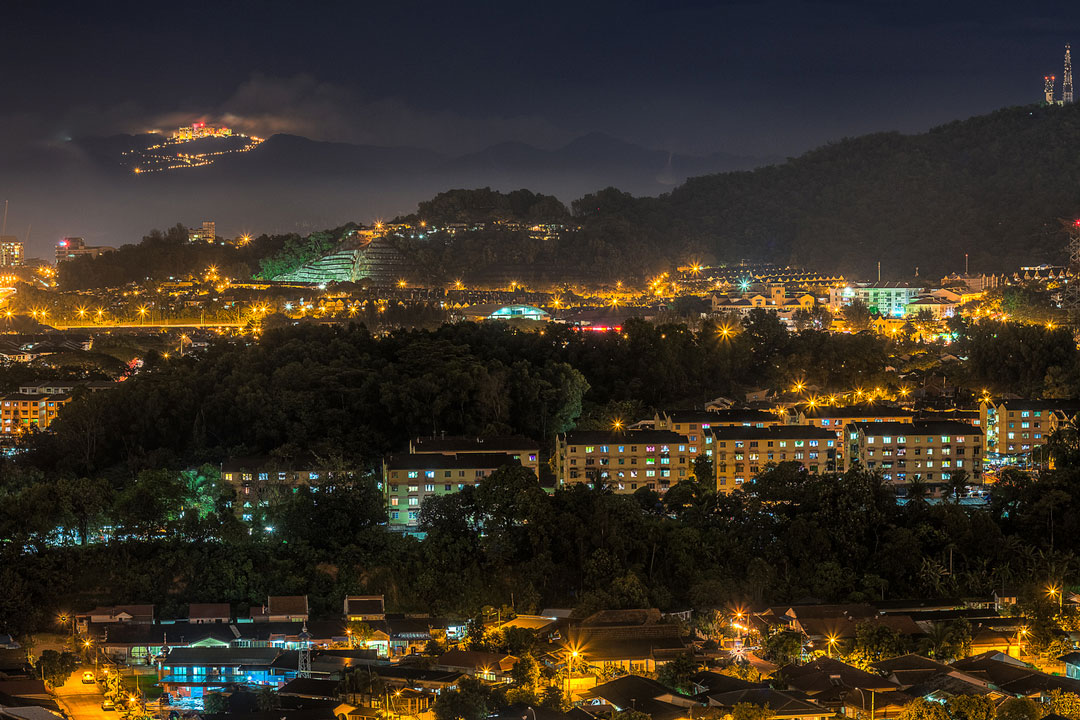
Panorama Langkawi: This tropical paradise has several attractions such as a SkyCab that takes you on a twenty minute ride to the top of the beautiful Gunung Machinchang. You can also visit the 3D art museum, 6D Cinemotion and F1 simulator.
Kota Kinabalu: This coastal city is the capital of Sabah and is surrounded by rainforest. You’ll love to walk through its busy markets and stroll along its picturesque beaches and modern boardwalk. You can also access the Kinabalu National Park from here.
Malacca City: A trip to Malaysia is incomplete without a visit to Malacca, a lovely and vibrant city known for delicious food, old Portuguese churches, night street markets, antique stores and lots more. Opt for a day tour to get a good look around the city.
Taman Negara: This sprawling tropical rainforest is set in the Malay Peninsula and promises exciting jungle treks, river trips, canopy walks and is home to the gigantic rafflesia plant apart from tigers, exotic birds and macaques.
Sandakan: If you’re in the area, stop by the limestone Gomantong Caves to catch sight of kingfishers, bats and swiftlets. You can also visit the Sepilok Orangutan Rehabilitation Centre, the famous Puu Jih Shih Temple and Agnes Keith House.
Tioman Island: For a quiet getaway, you’ll love the densely forested Tioman Island which is surrounded by coral reefs and dotted by cosy beach resorts. It’s a popular destination for scuba divers.
Malaysia was the most welcoming place to cross during my bicycle tour of South East Asia. From being stopped by the road side and offered free food by car drivers, to being hosted in strangers’ home, I will never forget the generosity and the warmth of the Malays. Malaysian English, or Manglish, is also immensely endearing and something worth sticking around for. My favorite sentences picked up during the trip were: ‘got’, ‘can’, ‘also can’, ‘can also’, ‘cannot’, ‘see first’, and ‘where got’. Concise! – Amelie, Mostly Amelie
Travel Destinations in Indonesia
Indonesia, the land of volcanic islands, exotic jungles, sprawling cities and amazing cuisine holds a wealth of excitement for the wanderlust-stricken traveller.
Indonesia is an incredible country filled to the brim with raw, unadulterated beauty and overflowing with friendly faces. What surprises me about Indonesia is how relatively undiscovered it is to visitors. Of course, Bali is massively popular, but regions like the Komodo Islands and Bintan Island capture as much divine creativity as other island nations, and yet attract far fewer visitors. This will only last for so long so go now! – Luke, Backstreet Nomad
Bali: This is one of Indonesia’s most popular tourist destinations and is held with high esteem for its beautiful coral reefs, extensive rice paddies, pristine beaches and forested volcanic mountains. You can visit the famous Uluwatu Temple or head to one of the resort towns of Sanur, Seminyak or Nusa Dua.
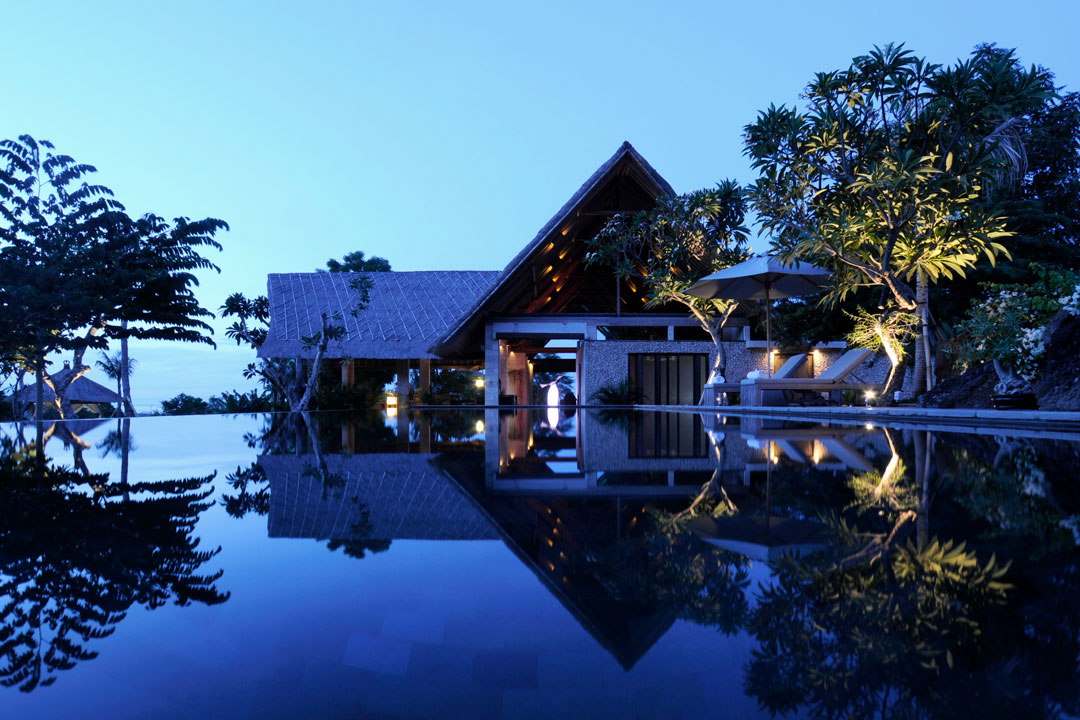
Jakarta: If you’re looking for a wonderful mix of Malay, European, Chinese, Javanese Indian and Arab cultures, you’ll love the language, cuisine and architecture that Jakarta offers. While in this city of contrasts, visit Glodok, Sunda Kelapa and Kota Tua for a wonderful experience.
Bandung: To escape the heat, visit Bandung which lies at a 768m elevation and enjoys a tropical yet cool temperature. You can shop till you drop at Jalan Riau, Jalan Setiabudi and Dago district. This location is also known for art deco and colonial architecture.
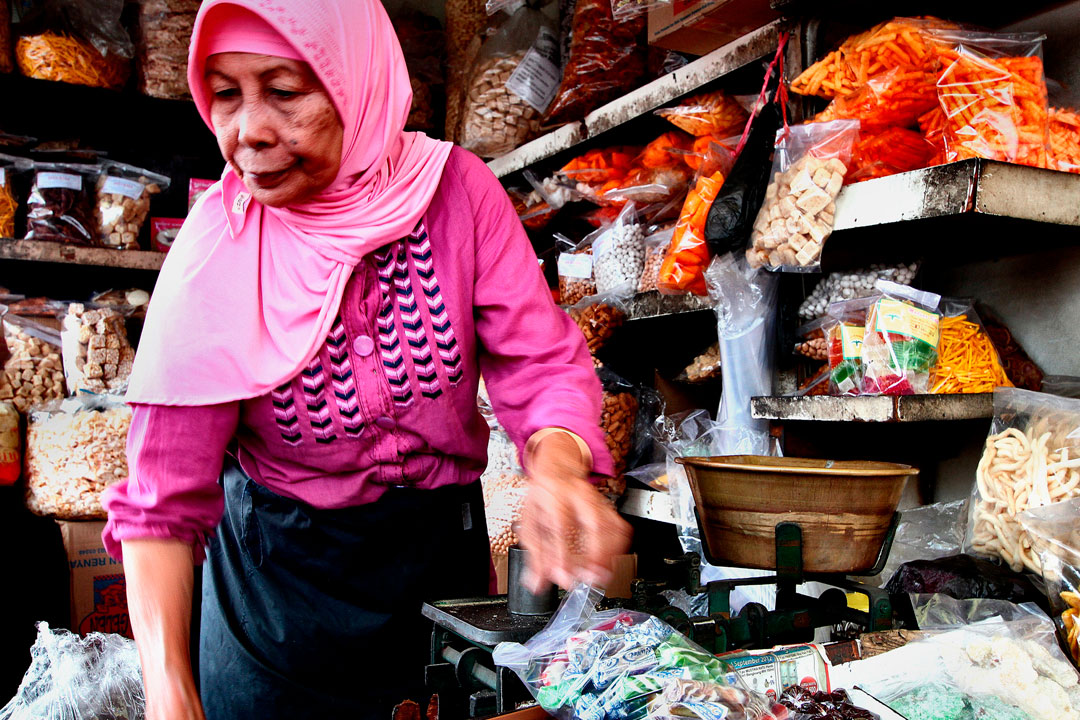
Lombok: Situated towards the east of Bali, this adventurous location offers great opportunities for snorkelling, diving and has prime surf and picturesque beaches. You will also want to pay a visit to the sea turtle hatchery. This location has several top-end resorts that offer exclusive beach access and amazing sunset views of Mount Agung.
Yogyakarta: For a peek at royal living head to the kraton or the royal complex of the Sultan’s Palace which was built way back in the 18th century. You can enjoy gamelan concerts and Javanese dance performances at the many open-air pavilions within the kraton.
Bintan Island: Known for exhilarating water sports, private beaches and championship golf courses, this trade port offers everything from upscale resorts to rich colonial Dutch architecture. It is the largest out of the 3000 islands in the Riau Archipelago.
Batam: Although a small island, Batam offers jet skiing, windsurfing, parasailing and several golf courses. The busy port is also a free trade zone where you can indulge in duty-free shopping, vibrant nightlife and beautiful beaches.
Hands down the most beautiful place we visited in Indonesia was Raja Ampat. Raja Ampat is one of those places that you see a photo of and say “wow, I need to see that for myself at some point in my life.” Well, after travelling across Indonesia to get there, we can honestly say it’s every bit as beautiful as the pictures. With crystal clear waters and paradise islands dotted all over the place, Raja Ampat is without a doubt one of the most picturesque spots in the world, and it is well worth visiting Indonesia just for this place. – Brian and Macca, A Brit and a Broad
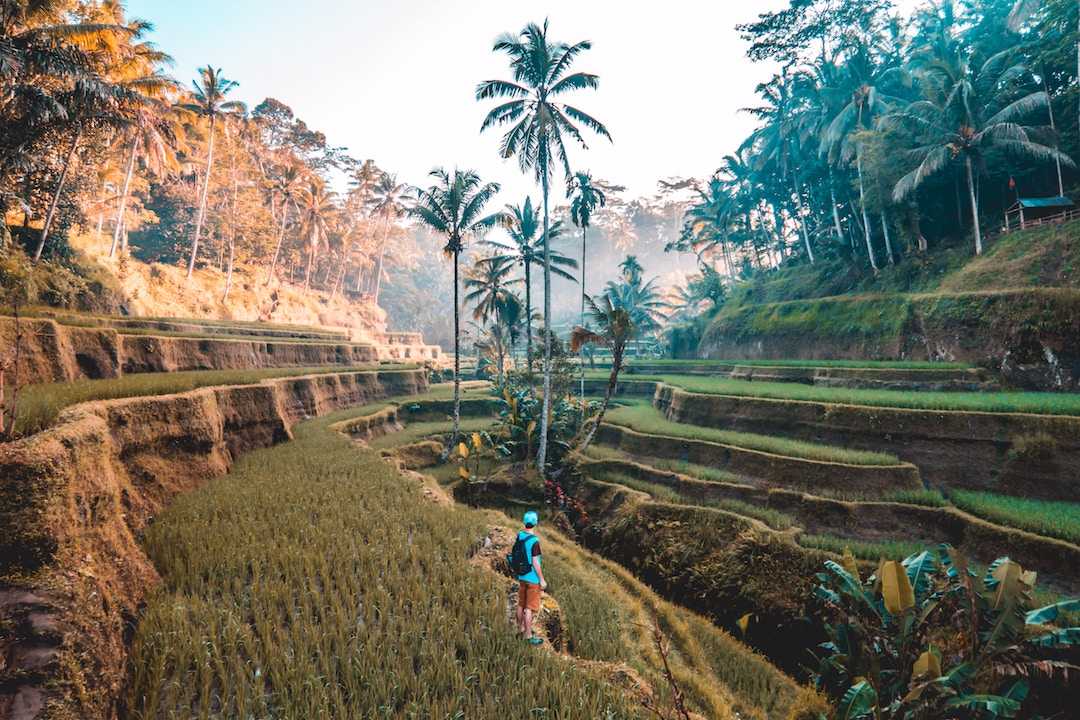
Food & Drink
Food in Malaysia
Asian delights served up in style
If you’re looking for a healthy and traditional breakfast, try the local Nasi Dagang. It comes with fish curry, steamed rice in coconut milk, pickled vegetables, eggs, solok lada and fried shaved coconut. Bakuteh or ‘meat bone tea’ is another popular dish of fatty pork ribs served in a broth of assorted spices and herbs.
A wonderful mix of food makes Malaysia a truly delicious destination. From some of the best street food in Asia, to hip cafes with a vibrant coffee culture, to contemporary fine dining, there’s much to explore and keep culinary passions aflame. – Monica, The Yum List
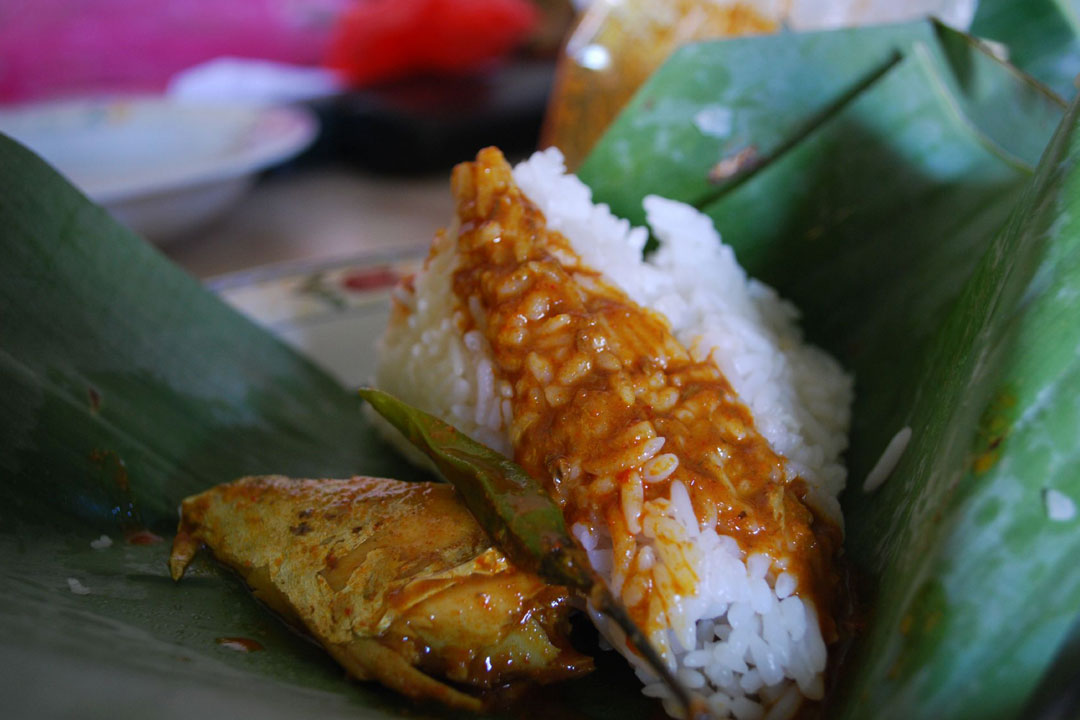
When it comes to noodles, you’ll be spoilt for choice. Try flat noodles such as Sang Har Kwey Teow which consists of Cantonese style river prawns served in an egg-based liquid sauce.
Alternatively, try yellow noodles such as Hokkien mee which features squid, pork, cabbage and fish-cake as well as a delicious garnish of crispy fried pork lard. Another popular option for lunch is Nasi Kandar, an originally Penang dish that consists of steamed rice with side dishes such as curried mutton, prawns, fried chicken or cubed beef.
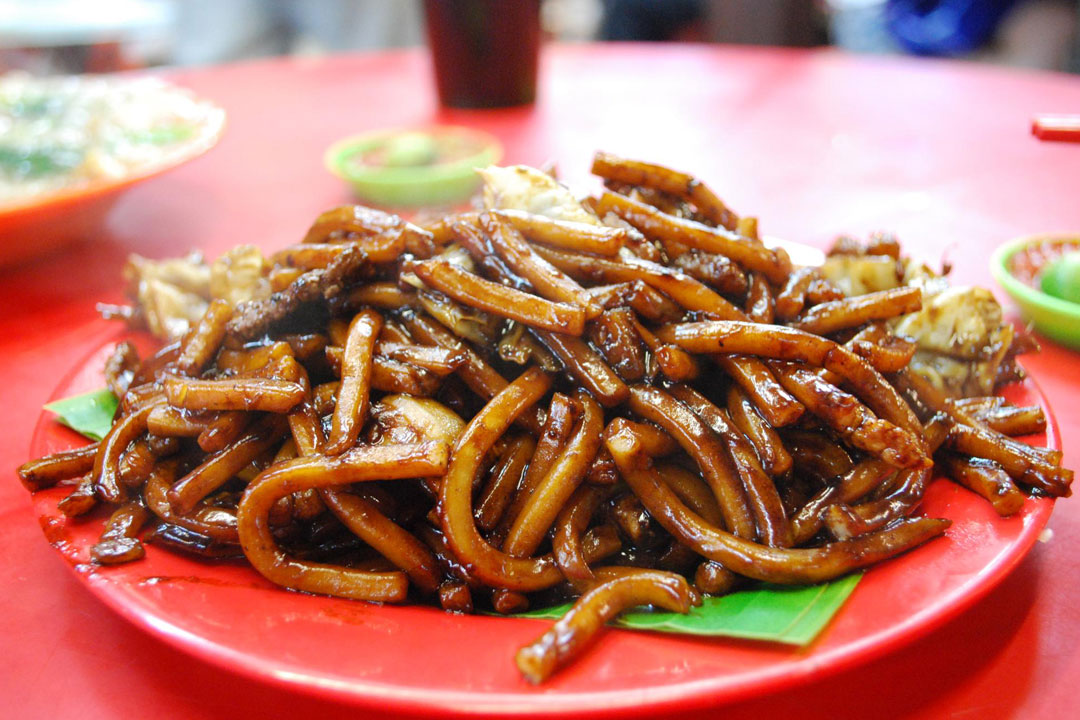
If you love the taste of barbecue, then try Charsiew which is boneless seasoned pork on skewers that has a delicious hint of honey, soy sauce and five-spice powder. Another must-try dish is Nasi Lemak which comes wrapped in a banana leaf and consists of coconut perfumed white rice and other side dishes.
One of the best things about Malaysia is the food. It is a perfect melting pot of Malay, Indian, and Chinese cuisine. This is seen best in Kuala Lumpur and Penang. But, even on resort islands like Langkawi, it’s possible to find traditional cuisine like beef rendang , nasi campur, and spicy sambal. One of the best food experiences to have in Malaysia is to take a traditional Malay cooking class to better understand Malaysia’s food culture. – Amber, With Husband In Tow
From savoury to sweet, a journey for the senses
To appease your sweet tooth, order some Malaysian desserts like ABC (or Ais Batu Campur) which is shaved ice with sugar syrup, sarsi and red rose, sprinkled with jelly bits, coconut milk, red beans and corn kernels. You’ll also love apam balik which is more of a street stall snack and has the same consistency of cake. It has an awesome filling of honey, peanuts and sweet corn. Kids will enjoy Bahulu or sponge cake as it has a lovely golden crust and comes in different shapes and sizes.
Malaysian cuisine is so unique because it’s a fusion of Indian, Chinese, Malay, and European cultures. Some must-try dishes when traveling to Malaysia include Char Koay Teow (stir-fried rice cake strips) with prawns, Hokkien pork noodles, the famous Penang Asam Laksa along Kweng Kwee Street in Georgetown, chicken satay, and of course some traditional Chinese Dim Sum. Make sure to refresh with an ABC dessert (Ice Kacang AKA Air Batu Campur), which is basically shaved ice topped with red beans, sweet corn, jellies, and drenched in sweet evaporated milk. It’s the ultimate refresher on a hot day. My best advice to any foodie traveling to Malaysia: Don’t shy away from the dining at local markets and hawker centers – this is freshest and most authentic Malaysian food you can get! Make sure you bring your pack of wet wipes, cash, and an appetite! – David, David’s Been Here
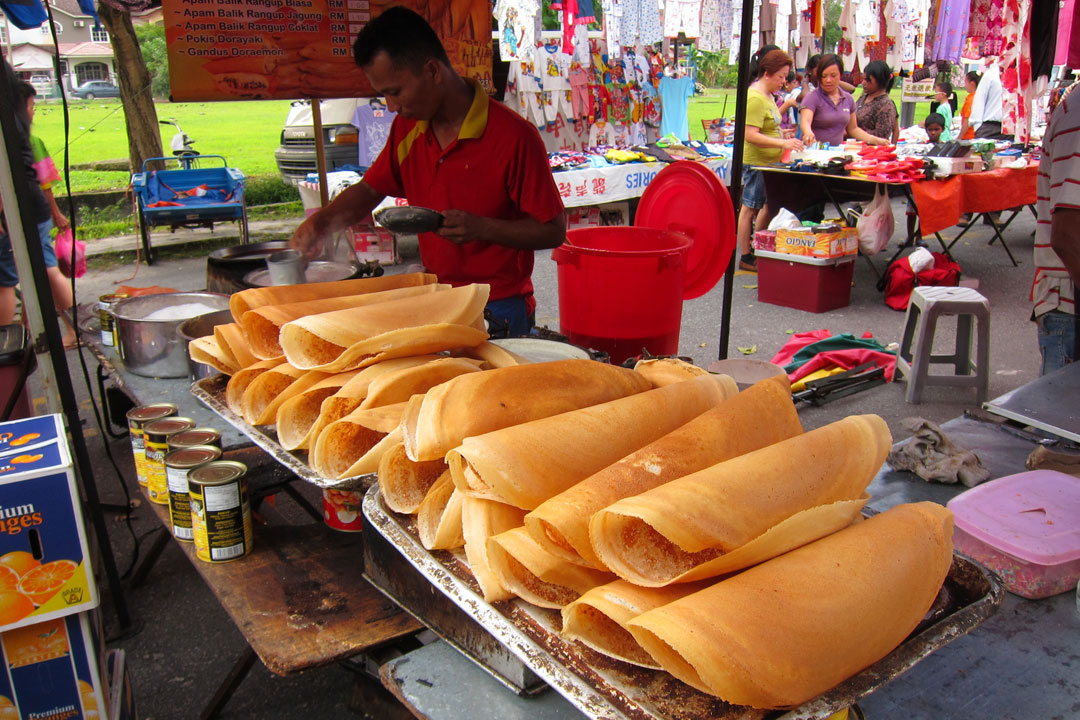
Bingka ubi or Casanova cake is a popular baked and chewy dessert made of pandan flavoured custard, tapioca, palm sugar and coconut milk. If you like spring rolls, you’ll enjoy Kuih ketayap which is a tube-shaped crepe filled with a rich and sweet coconut filling. When it comes to beverages you have to try Teh Tarik and Teh Halia (made with ginger), a strong bitter milk tea that is frothy and served hot.
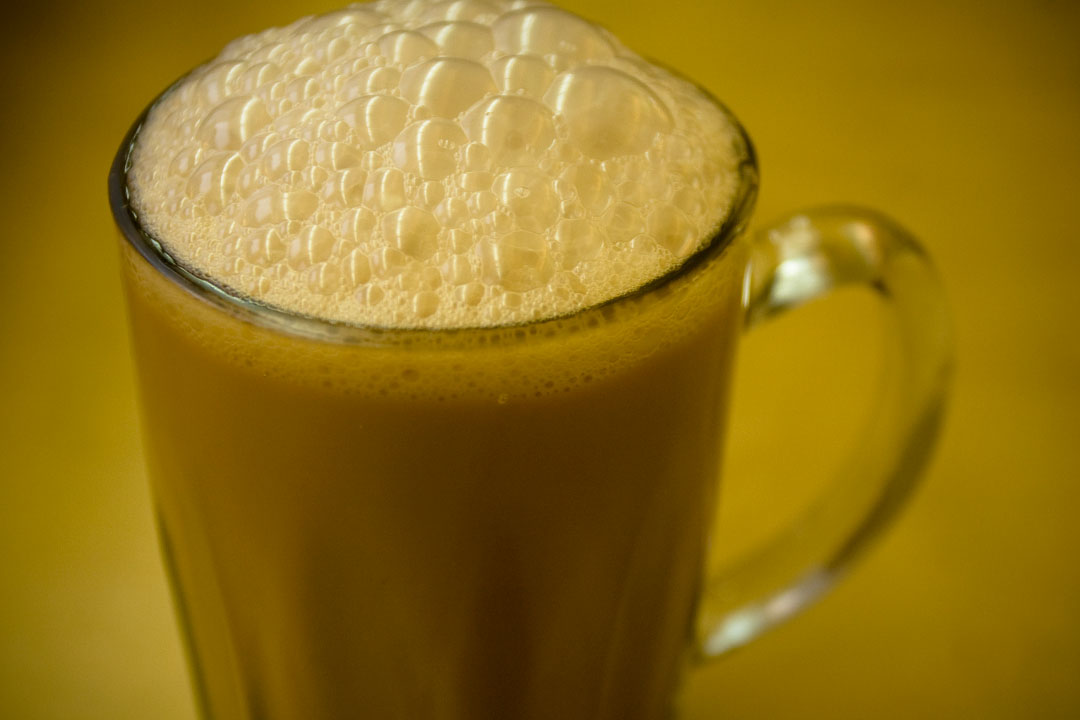
Malaysians are food-obsessed and for good reason – we think we have some of the best food in the world. (In recent years, Malaysia’s claim as a food paradise has received global recognition, with Penang’s Asam Laksa ranked #7 in CNN’s list of World’s 50 Best Foods and emerging food destination Ipoh coming in at #6 in Lonely Planet’s Top 10 Places To Visit In Asia.) What makes Malaysian food special? As an early form of fusion cuisine, it draws its inspiration from the ingredients, cooking styles and flavours of its colourful immigrant communities from countries as far-flung as China and India. Malaysia is, as its tourism catchphrase says, Truly Asia. – Jackie, JackieM
Food in Indonesia
Spice-up your holiday with exciting local cuisine
If you’re in the country, you can’t leave before you try tender beef rendang which is slow-cooked for hours and served with lime wedges and white rice. Javanese-fish cakes are also very tasty and can be eaten with pickled cucumber. Those who love soup can order some Soto Ayam or chicken noodle soup which is a local classic. For a hearty meal, order Gulai Kambing or lamb curry made with authentic and traditional spices from the region.
Indonesia is all about food. To me the archipelago is the culinary paradise for the explorer at heart. Try Nasi Goreng (Indonesian Fried Rice), Gado Gado (mixed salad with peanut sauce) and my favorite dessert drink Es Cendol (coconut milk, palm sugar syrup and green rice jelly noodles). – Jeff, Cooking With Keasberry
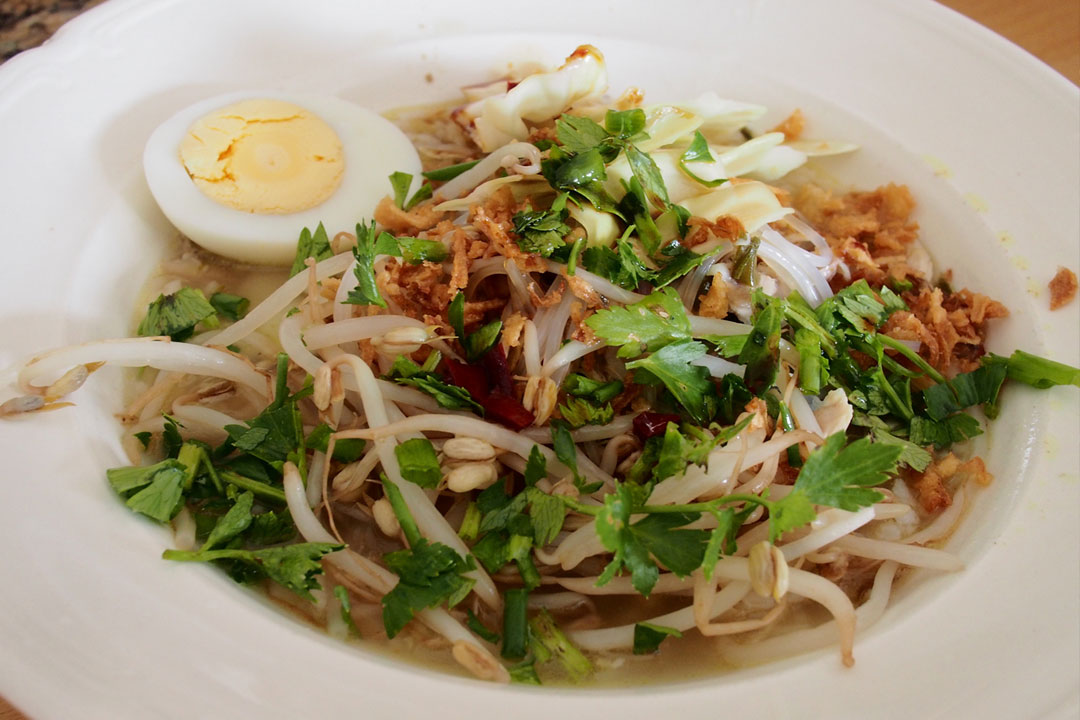
In Indonesia, there’s always something for everyone. Nasi Goreng is considered the country’s national dish and is a version of fried rice made with kecap, a thick soy-based sauce. It comes with a garnish of carrots, cucumber, pickle and acar as well as your choice of meat. Assuming you’re not allergic to peanuts, get some Tahu Goreng which is fried tofu, sauced with peanuts.
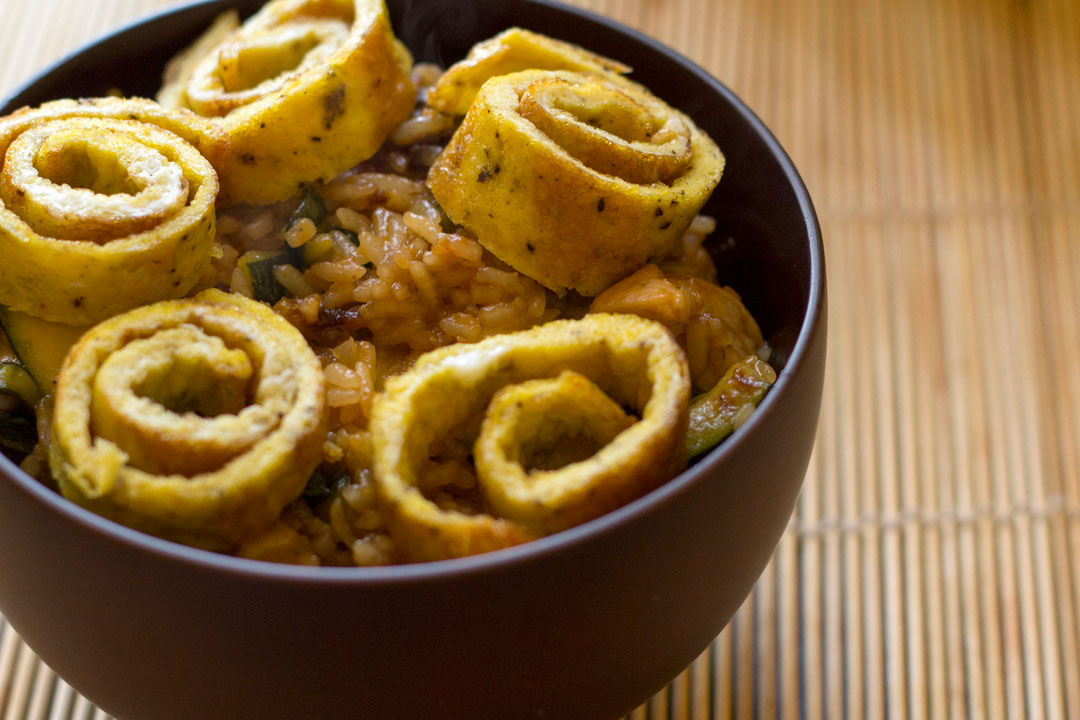
It’s both tangy and sweet and can be a great side dish to any meal. Vegetarians will love Chai Kue or steamed vegetable dumplings which are served with vinegar based chilli sauce.
Mouth-watering delicacies that will leave you wanting more
One of Manado’s specialities is Smor Ikang which is a braised fish stew that has a pungent flavour thanks to the addition of mace which adds sweetness and depth. Satay in any form tastes great and more so in Indonesia. These tasty meat skewers can have goat, rabbit, mutton or chicken on them. For a quick and easy treat, try some Bakso, which is a noodle soup with meatballs. It’s a favourite among local students.
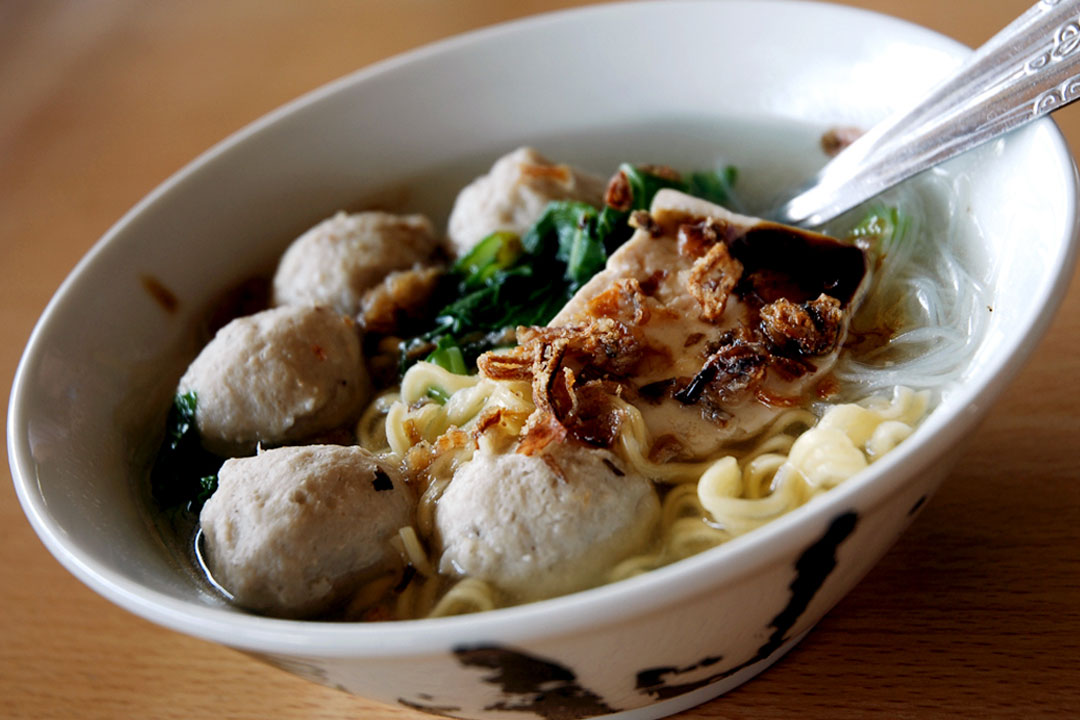
There are many sweet dishes that come from this part of the world and some of the ones you should try are Lapis Legit or thousand-layer cake, Cantik Manis or sago cakes with vanilla and Rujak or spicy fruit salad. When it comes to Western cuisine, the larger cities have fast-food chains, however in the rural areas you’ll find mostly traditional fare.
Indonesia is a very beautiful country with many sites with incredible sceneries. The people are also all very warm and friendly and let’s not forget the wide range of diversity in cuisines! Indonesia is special because I can find views that are on par with any other foreign countries, all we really need is to pay a little more attention to what we have here in this amazing country! – Cindy, LULABYSPOON
Culture
Malaysian Culture while Travelling
The country is a wonderful mosaic of different yet amalgamated cultures. For generations, Malays, Indians and Chinese and several indigenous ethnic groups have lived together and created their own unique heritage. The official language is Malay but most of the locals speak English so tourists should face very little communication barriers while visiting the country. Islam is the predominant religion but other faiths such as Buddhism, Christianity and Hinduism are also practiced.
Malaysia, a country that brings together various cultures such as Malay, Chinese, Indian, Dusun and more. We are also well known for astounding beaches, luxuriant rain forests and a mix of Malay, Chinese, Indian and European cultural influences. Believe me, you can enjoy your time in Malaysia to the fullest, as you will find loads of food! Hop to Penang Island where you will find a wide variety of hawker fares, Malacca will bring you the Baba Nyonya delights, and KL will reveal an enticing international cuisine. – Pamela, Malaysian Foodie
With regard to dressing, avoid skimpy clothes but avoid packing very heavy material such as denim. Loose pants and slacks are great and can be paired with comfortable cotton. While mid-thigh length skirts and sleeveless tops are no problem, you shouldn’t wear them to a mosque. If you’re spending most of your time outdoors, wear a hat and apply sunscreen before you head out.
While most of the country is quite safe for tourists, it’s best to stay away from the coastal areas of eastern Sabah due to rare incidents of kidnapping. If you’re in the city, keep an eye on your personal belongings, especially while travelling on public transport. There have been cases of credit card fraud so keep your cards and cash safe and on your person at all times. Another problem to watch out for is the ‘smash and grab’ where attackers target slow moving vehicles. Women are advised not to hail a taxi from off the road especially after dark and instead should order cars via telephone. If you’re travelling between June and October, there are often “smog warnings” and authorities may limit outdoor activities.
Malaysia is a beautiful diverse country filled with tropical treasures. We have 3 main ethnicity (Malay, Chinese and Indian) in Malaysia, so do expect to experience various cultures, celebrations, cuisine and clothing. – Jess, Jessy The KL Chic
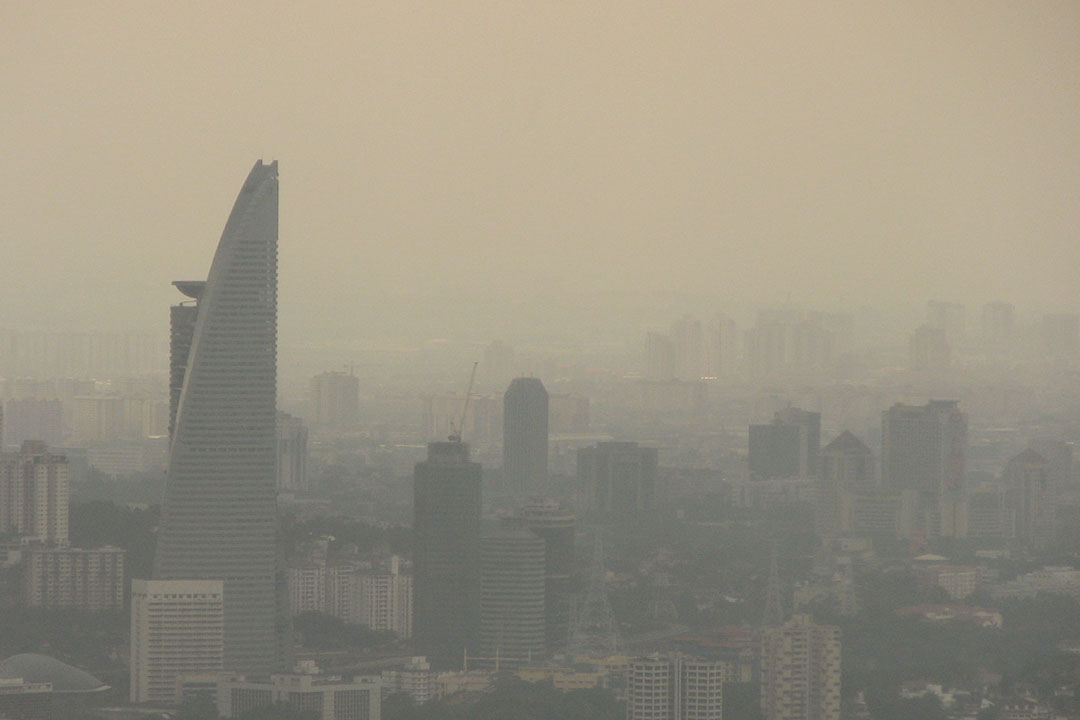
Malaysia’s cultural diversity continues to amaze me. Follow the trail from a simple street food and you might find the original recipe came from India or China. Or that it got decorative touches from colonial influences as it was passed through the generations and then across the various Malaysian states. Meeting Malaysians in day to day life rather than ‘tourist venues’ opens your eyes to the depth of their cultural. Exploring ‘true’ Malaysia with diligence and a sense of adventure will take you beyond the all popular Kuala Lumpur and Penang and reward you with a glimpse of the fabric of local life. – Vanessa, The Island Drum
Apart from safety, health is another big concern when you’re travelling to a new country. If you’re heading to the Eastern region of Malaysia, beware of the risk of malaria. It’s best to avoid tap water, ice cubes and fountain drinks. If bottled water is not available, carry portable water filters and iodine tablets.
Be it a quiet getaway, a weekend retreat or a working venture, travelling to Malaysia is about making journey of discovery. There are plenty for travellers to see, discover and eat at its 13 states which are steeped in history -culture, heritage and events. – CK Lam, What2seeonline.com
Indonesian Culture while travelling
The country is a living symbol of unity in diversity as it has a wonderful mix of language, ethnic groups and religions. The main religion practised by the majority of the population is Islam; however there are other religions such as Hinduism, Buddhism, Christianity and Confucianism that are all widely practiced. The Javanese people constitute the largest ethnic group and are said to make up 45% of the country’s entire population.
Indonesia is made up of many islands, cultures and native languages, though Bahasa Indonesia is our official language. Visiting Indonesia once in your lifetime is not enough, from active volcanoes to crystal clear oceans, from exotic fruits to tantalizing local cuisines, I promise you that there really is something for everyone. If there was one word to describe Indonesia, it would be diverse, because that is exactly what we are. – Agata, Dream Explore Wander
It is said that there are over 725 languages spoken by the locals, but the national language is Bahasa Indonesia. English is largely understood by people in larger towns and cities and many of them can speak the language fairly fluently. Since Indonesia is predominantly a Muslim country, it is best to dress conservatively so you don’t attract undue attention. While visiting a religious site, women should cover their heads with a shawl or a scarf. Instead of high heels, opt for comfortable sandals or sneakers. A phone bungee and a soft–sided backpack will keep your valuables safe for any day trips.
What makes Indonesia so special to us is its friendly people, fascinating culture, beautiful temples, incredible wildlife and unspoiled nature with pristine beaches, jungles and active volcanoes. As a traveller to Indonesia, this country offers endless exploration and diversity. We love that you can find everything from modern developed cities and areas like Jakarta and Bali to remote wilderness areas offering some of the world’s last great adventures. – Maria & Espen, Nerd Nomads
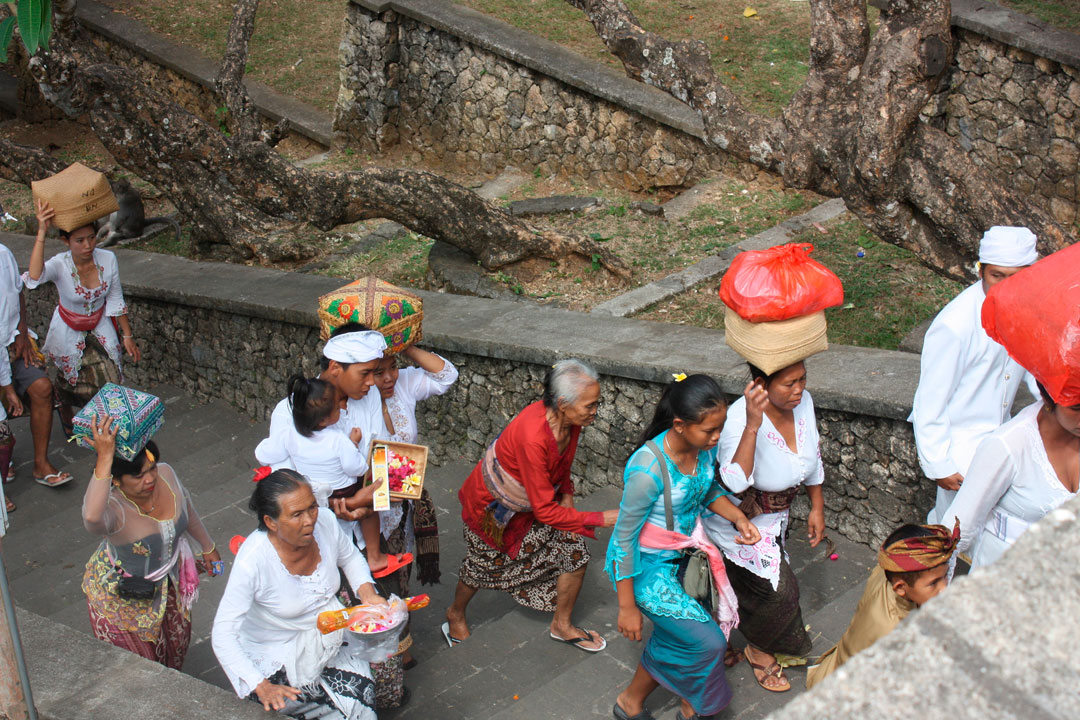
There is an on-going terrorist threat in Indonesia, so before you plan a trip, check travel advisories to the region. You can also monitor local warnings for earthquakes, volcanic eruptions, floods and other natural disasters. When travelling by ferry, check if appropriate safety precautions have been met and avoid using a boat that looks unseaworthy or overcrowded. Avoid hurting local sentiments by talking about religion and politics. The locals are very friendly and will be eager to help if you respect their culture and homeland. With regard to personal health, always drink bottled water and avoid drinking fountains and tap water at all costs.
We’re all travelers. Do you know that Indonesia has some of the most beautiful beaches in the world? I keep returning to Bali for its boutique shopping, deserted waterfalls, beautiful sunset, yoga retreats, swimming and relaxing in the sun with spectacular views to the ocean, romantic villas or Insta-worthy cafes. – Mullie, My Fun Food Diary
Getting Around
Getting around Malaysia while travelling
In most of the cities you’ll find a fairly effective taxi service which can be hired on a share basis. The price is definitely higher than travelling by bus and on the peninsula; it could cost about 50 sen for one kilometre.
Malaysia has an affordable and comfortable train network run by Keretapi Tanah Melayu. Travellers have their choice between taking local or express trains. Express trains have fewer stops and are air-conditioned. Most local trains have erratic schedules and are much slower and crowded. If you’re travelling on a budget, you could try hitching a ride but there is an element of risk especially if you’re travelling solo. Furthermore, hitchhiking is prohibited on expressways.
Alternatively, there are several agencies such as Avis, Orix, Mayflower and Hertz that offer rental cars and the roads are well maintained compared to other Asian countries. However, in Kuala Lumpur, expect heavy traffic and remember, not all drivers follow traffic rules. You should also anticipate many distractions and obstacles on the road, like stray animals and motorcyclists. It is recommended that you bring an International Driving Permit if you wish to drive in the country. In Malaysia, motorists drive on the left side of the road and cars are right-hand drive. Some guesthouses offer motorbike rentals but you’ll need to wear a helmet and have a valid driver’s licence. Motorcycles are useful especially outside the city when you’re navigating through country roads.

There are ferries that sail to Penang, Langkawi, Pangkor, Tioman and Perhentians. Tickets can be bought at the jetty or on the boat itself. Most vessels are either a motorized fishing boat (penambang) or a speedboat. The quickest way to travel is by air through budget carries such as Firefly and AirAsia. If you’re heading to Tioman and Redang you can fly from Kuala Lumpur on Berjaya Air.
Getting around Indonesia while travelling
Most tourists from Europe or North America would land either at Bali or Jakarta. From Bali, you can use one of the country’s budget carries to take you to Flores or Sumatra. Alternatively, you can use a ferry to get to Java, Gili Islands or Lombok. At most of the major tourist destinations you can rent a car, but be prepared to drive alongside hundreds of motorcyclists. Motorists drive on the left side of the road and you’ll need an International Driving Permit to rent a vehicle.
Buses in Indonesia are slow but affordable and should only be relied on for travelling short distances. You could also ride on bemos or communal minibuses but check the fare before you start your journey so there’s no chance of getting ripped off. In the city, you’ll find motorized rickshaws and becaks where the driver pedals a bicycle that is attached to the rickshaw.

Some locations such as Sumatra and Java are easily accessible by train using Kereta Api, the national railway. There are also rail lines that connect between Lampung and Padang but the network is not very good near Sumatra. You can get from island to island using either the steel ferries that carry hundreds of passengers or the simple wooden boats. From Ketapang, there are several ferries that depart to Gilimanuk and you can get a ticket at the port itself. From Bali, you can get a ferry to Surabaya, Gili Meno, Kupang, Maumere, Bima and more.
One of the things I enjoyed the most about Indonesia is that it is a cauldron of cultures, where anybody is really welcome or, to put it even better, everybody is united in diversity. This is a country where old and new gracefully mix; where ancient ritual dances are performed – like the Kecak in Ulu Watu, Bali, or the Ndundu Dake one in Melo Village, in Flores; and at the same time the younger generations (and not only) are hyped by social media, love meeting new people, enjoy a night of partying in the trendiest places in Bali and enjoy traveling around the world. The peaceful coexistence of cultures in Indonesia is a wonderful example that other countries should draw upon. – Claudia, My Adventures Across The World
The Overall Costs
Price of things in Malaysia while travelling
Malaysian currency is the Ringgit (RM) which is divided into 100 sen. A budget traveller would spend about 100RM a day while a top-end stay would cost about 400RM a day. You can expect to pay between 100 to 400RM for a double room in a mid-range hotel while a meal in a similar hotel would cost approximately 40 to 60RM. If you’re looking for a meal in a top-end restaurant, be prepared to pay upwards of 200RM but you can quite easily eat for as low as 8RM in an inexpensive restaurant. A McDonalds meal would cost around 12RM, imported beer is priced at about 14RM and a 1.5 litre of bottled water would cost about 2.34RM.
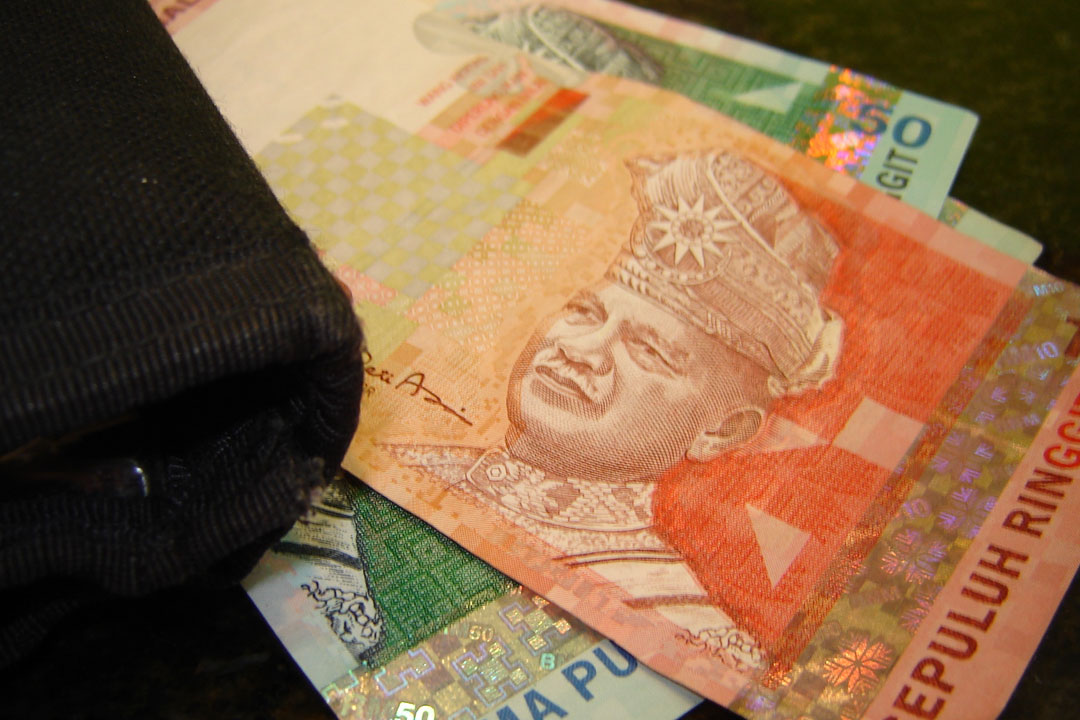
When it comes to transportation, a one way ticket using local transport would cost you about 2RM or you can get a monthly pass for 100RM. If you’re getting a taxi between midnight and 6am, you’ll be expected to pay a 50% surcharge on the metered fare. There is also an extra 20sen fee for every additional passenger.
Price of things in Indonesia while travelling
Currency in Indonesia is called Rupiah and is denoted by Rp. A simple lunch for two would cost about 130,000Rp while transportation costs for a day would come to approximately 54,333Rp. A one-way ticket using local transport would cost roughly 4,000Rp and taxi fares start at 7,500Rp. You can budget a daily amount of about 15,412Rp for water, tips and charity at 39,525Rp. A trip to a spa would cost upwards of 870,000Rp for two people.

A regular coffee would be priced around 25,408 Rp and a can of soda would cost about 6,807Rp. A mid-ranged bottle of wine would cost about 300,000Rp and local beer would cost about 25,480Rp. Overall, if you’re visiting from a European or North American location, you’ll find the prices to be very affordable. At most street markets you can even bargain for a good deal, especially while shopping for souvenirs.
See all tours and trips to Indonesia – Including itineraries, past traveller reviews and prices.
See all tours and trips to Malaysia – Including itineraries, past traveller reviews and prices.

